SEO - What is it, Why's it important, How's it work?
Leighton Emmons
Tue Jun 23 2020
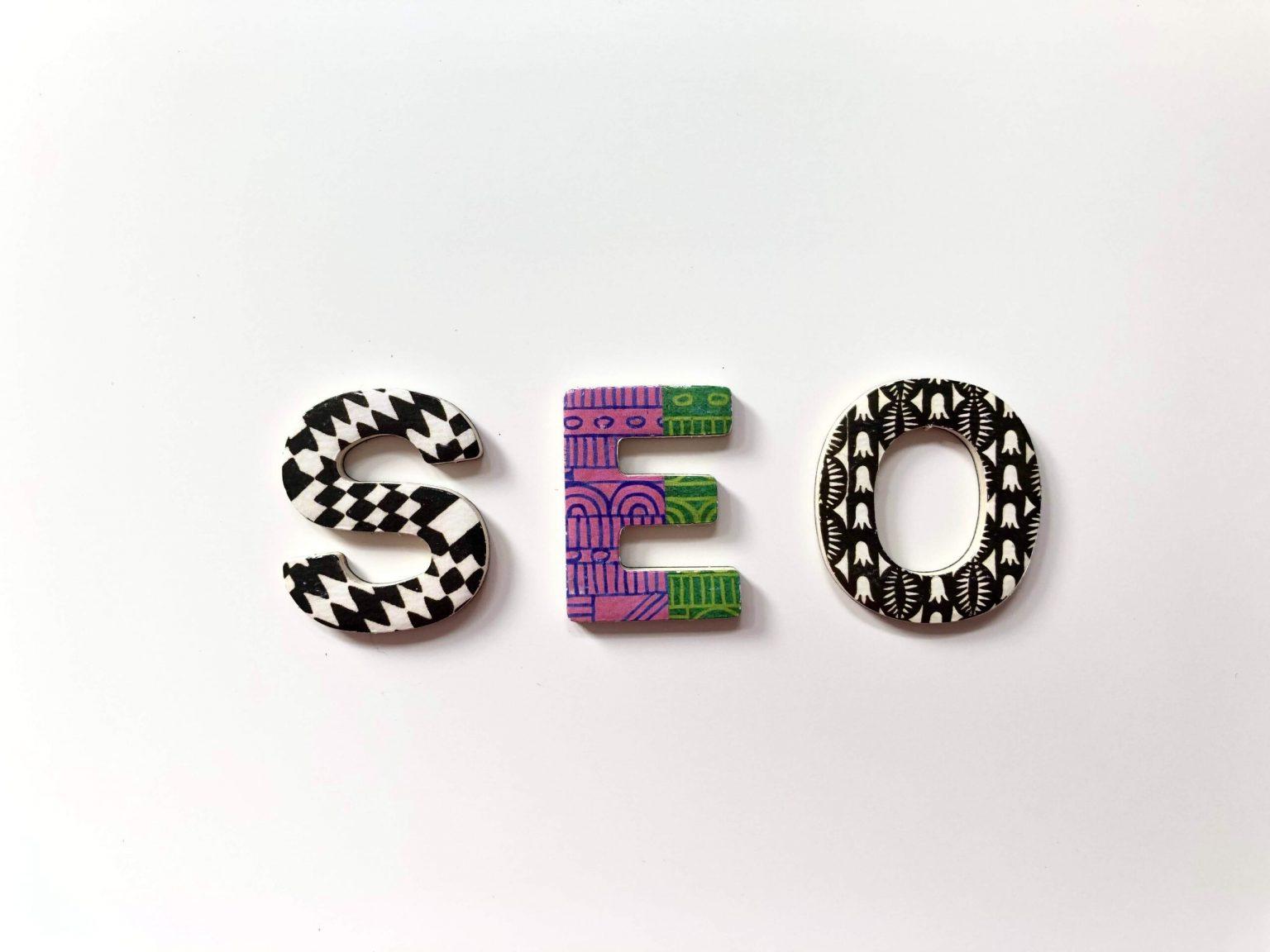
What is SEO?
SEO stands for Search Engine Optimization.
Exactly as it’s name suggests, its all about optimizing your website for search engines.
But this alone doesn’t tell us much.
To really understand what SEO is we’ll need to break up this definition “optimizing websites for search engines”.
So let’s start with: What is a search engine?
Search engines are how users on the internet discover new content. Google, Bing, DuckDuckGo – these are all search engines. You’re likely most familiar with Google.
Next let’s understand optimizing: What are we optimizing? How do we optimize a website for Google?
To understand this, let us quickly give some context.
When a user on the internet is looking for something, they go to Google and search for a given query using a search term, or what we call, a keyword.
A ‘keyword’ is just a fancier way of describing a search term.
Keywords can be a single word or a whole sentence: ‘photography’ is a keyword just as ‘how do I get better at photography?’ is can be considered a ‘keyword’ too.
Now, for any given keyword Google likes to offer a visitor 10 results on its first page, ranked in order from 1 (top of the page and most relevant) to 10 (bottom of the page and least relevant).
So how does Google decide which website gets the number one ranking?
Let’s break it down.
Step 1: Google reads the keywords used in the search query.
Step 2: Google matches these keywords to all known websites to figure which websites are relevant to this search.
Step 3: Google uses its ranking algorithm to determine of all the relevant websites, which website gets the #1 ranking.
As part of its ranking algorithm, Google has a set of criteria that it uses to evaluate each and every website on the internet. Google calls this ‘Page Rank’. This is Google’s evaluation of how much priority it should give to your website when choosing rankings (the criteria used by Google for this is outlined later in the article).
So, this is what we are optimizing for.
We are optimizing our website so that Google’s algorithm ranks our website as high as possible for the keywords we want to appear for.
Keep in mind, you cannot rank for every keyword. There are an infinite number of keywords, and the majority of them have nothing to do with your website.
Thus, the first step in SEO begins with identifying what keywords (or search terms) you want to rank for. This is then followed up with the process of optimizing your website for these keywords (putting the keywords around your website) so that Google knows your website is relevant to that keyword search.
So now we know what SEO is, lets begin to understand why SEO matters.
Why’s SEO important?
Believe it or not, for all of the world’s largest websites (Amazon, Reddit, Wikipedia), the majority of their traffic comes from search engines.
Don’t believe us?
Here’s the website traffic for Business Insider: 66.35% from search engines.
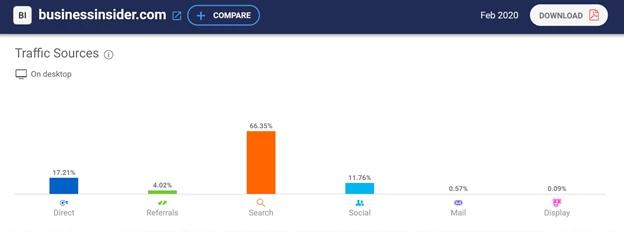 Website traffic for Business Insider
Website traffic for Business Insider
Here’s the website traffic for Harvard University’s website: 59.39% from search engines.
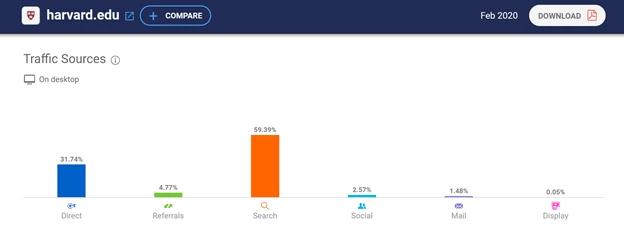 Website traffic for Harvard University’s website
Website traffic for Harvard University’s website
You get the picture.
SEO is extremely important for how people discover your website and learn about you.
As this data shows, search engines are going to be the your main online channel for driving traffic to your site.
That is, website visitors go searching for something on Google, and Google then guides wandering users on the internet to your website. Because you as the host of the website simply sits back and lets Google go to work for you, this quality of website traffic is considered organic growth for your website. You do nothing, the websites traffic comes naturally.
This is in contrast to paid advertising or PPC (pay-per-click) advertising.
PPC advertising, through Facebook Ads, or Google Ads, is growing your website traffic by constantly investing money. This is inorganic growth, as you are forcing your ads to be seen by paying for visibility in the hope visitors will click through the advertisements to your website. This type of website traffic does not come naturally, it only comes as long as you keep paying for it.
This image further breaks down the comparison between SEO and PPC (pay-per-click advertising).
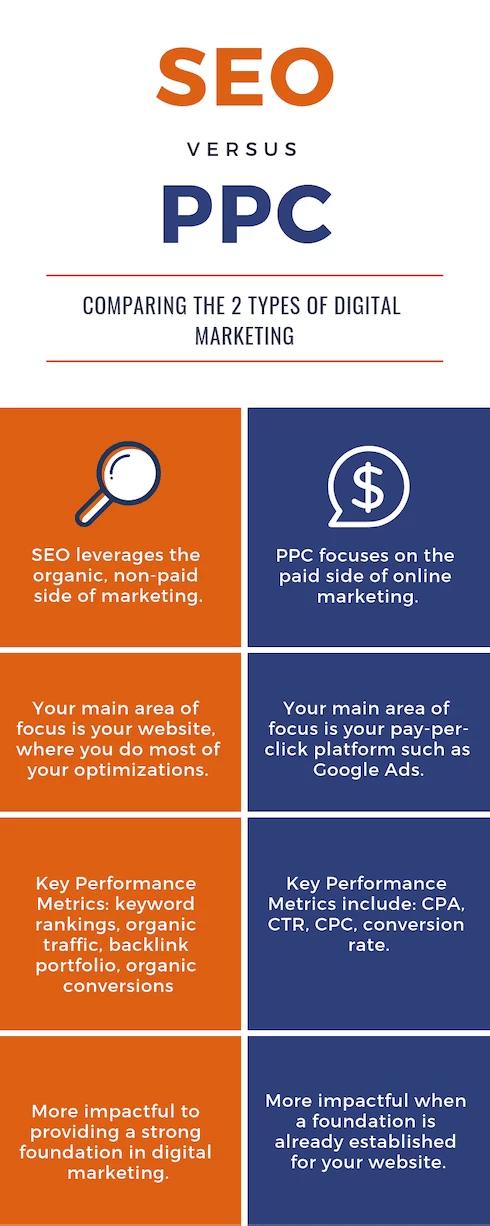 SEO vs PPC
SEO vs PPC
The easiest way to distinguish between the two digital market approaches, is one is short-term and one is long-term.
Can you guess which is which?
In case you couldn’t, SEO is a long-term digital marketing strategy.
SEO is building up the ‘infrastructure’ of your website so that Google recognizes your website to be an authority on its topic and offering highly relevant content to its website visitors.
The aim of SEO is to build up the prestige of your website, so that Google prioritizes ranking your website over any other for a set of given keywords.
Note, search-engine-optimization is no easy-task. It can take months, even years to grow and develop the SEO of a given website. But having said that, if your website’s SEO is extremely strong, you’ll have significantly more potential to capture thousands of inbound searches without paying anything.
In comparison, PPC (pay-per-click) advertising is a short-term digital marketing strategy. You run advertising campaigns over just a few weeks and can evaluate its impact on a day-to-day basis. You can begin seeing results almost immediately, but you are entirely reliant on paying money to keep seeing results.
Thus, for the most part, SEO is a long-term sustainable growth strategy.
And PPC advertising is a short-term unsustainable growth strategy.
Each strategy has its merits, but effective SEO is harder and takes longer to achieve, which is why it’s important to begin working on it sooner rather than later.
In summary, SEO is important because:
- SEO is your main source of organic growth: the largest share of people discovering your website is going to come from search engines like Google. Without optimizing for Google, you are missing out on the potential of thousands of new website visitors.
- SEO technically costs nothing: you don’t pay any kind of ongoing fee like you do with paid advertising. You optimize your website, then let Google do the work. Effectively, website traffic from Google is ‘free’.
- SEO takes a while to start benefiting from, so start soon: Building authority on your website takes time, as does fully optimizing your website, so the sooner you begin, the better. SEO changes will not rapidly take effect over night, it is a long-term strategy with a long-term payoff.
How’s SEO work?
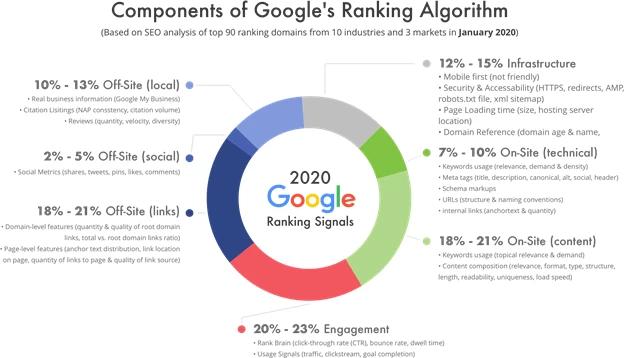 This image above gives a breakdown to the 4 components of SEO and their relative importance to Google’s ranking algorithm.
This image above gives a breakdown to the 4 components of SEO and their relative importance to Google’s ranking algorithm.
So, now we’ve gone over what SEO is and why it’s important, its now time to dive into how SEO works and what Google’s ranking algorithm takes into account.
We’ll begin by breaking down all the components that Google takes into account when ranking your website. This will help you understand how to optimize your website.
SEO is comprised of 4 main components. 2 of these components are in your control, 2 of these are not.
SEO components not in your control:
- Website Engagement
- Back-End SEO
SEO components in your control:
- On-Site SEO
- Off-Site SEO
Let’s start with the 2 components you can’t control.
Website Engagement:
This is how website visitors interact with your website. This is out of your control because you cannot dictate how website visitors will interact with your website.
This is calculated using data like:
- Bounce Rate – How many visitors land on your website, and without taking any other action, exit off your website.
- Average Session Duration – How long will a visitor typically spend on your website.
- Average Pages During Session – How many different pages on your website will the average visitor click into.
Back-end SEO:
This concerns processes related to the infrastructure of your site. This is out of your control because whether you’re using WordPress, Wix, or LightRocket to build your photography website, your website’s host platform is usually responsible for the quality of these factors.
This is calculated using data like:
- Page Speed/Loading Times – How quick can your website load.
- Mobile Friendliness – How responsive if your website when switching from desktop computer to mobile phone
- Security – Does your website have SSL security and run on a https domain
There’s often little you can do outside of minimizing the amount of content on your website (for faster page loading speed) to help improve these factors. Thus, the only control you have over your back-end SEO is picking the right host platform.
If your website loads slow, your mobile friendliness is horrendous, and your website has no security, this is often the fault of the host platform, not you.
It’s hard for us not to mention the fact that LightRocket is optimized for especially quick load times, offers 100% mobile responsiveness with you needing to do anything, and offers SSL secure https domains.
Now, let’s cover the 2 components of SEO you can control.
On-Site SEO:
On-site SEO concerns the actual content on your website. That is, what keywords and text do you have in and around your website.
This could include factors such as:
- Page Titles & Meta-Data & URL – The description you have put into your website’s title and meta-data as well as the words that appear in your URL.
- Keyword Usage – What keywords have you put in your page titles. What keywords occur most in the body of your website’s content.
Off-Site SEO
This concerns how external websites link to your website. That is, if website A has a link on their website to website B, then website B has earned a back-link from website A.
Google likes back-links because it proves that you have good content on your website. The more websites on the internet that have links to your website, the more reliable your website must be (in the eyes of Google’s algorithm). So having many other websites have links to your website is pivotal in having good SEO.
- Back-links – How many other websites have a direct link to your website. How prominent are these other websites that are linking to your website.
In summary, we’ve reviewed the 4 components of SEO.
- Website engagement
- Back-end SEO
- On-site SEO
- Off-site SEO
It’s important that you try to improve your SEO in each of these areas, though most of your attention will fall in the on-site and off-site SEO components as these are most in your control.
If you’d like to read about the ways you can improve these SEO elements specifically for your photography website, check out our article: 4 ways to boost the SEO of your photography website.
Written by Leighton Emmons.
Featured image by by Merakist
To read more helpful articles on photography, check out our blog page.
Join our growing photographer community at LightRocket and get powerful archive management and website building tools for free!


